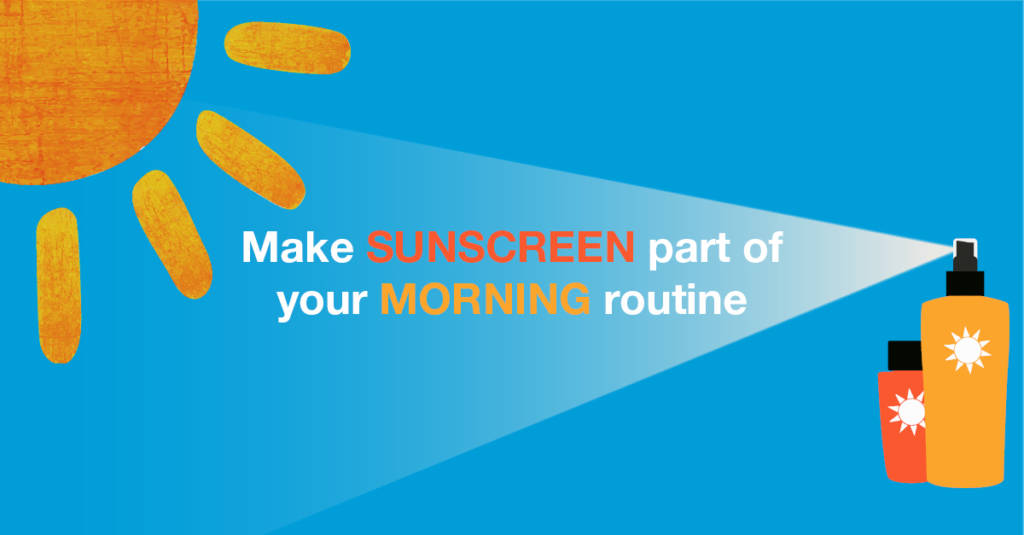
Peak health bodies recommend new approach to sunscreen use
The peak bodies responsible for sun safety advice in Australia and New Zealand have adopted a new policy on sunscreen use, recommending that people apply it daily as part of a regular morning routine.
The policy change follows a national Sunscreen Summit at QIMR Berghofer in Brisbane last year, at which representatives from some of Australia’s leading research, medical, public health and advocacy bodies* examined the current evidence on sunscreen use.
The recommendation is outlined in an article – led by Professor David Whiteman and Associate Professor Rachel Neale from QIMR Berghofer Medical Research Institute – which has been published today in the Australian and New Zealand Journal of Public Health.
Associate Professor Neale said there was now clear evidence on the benefits of daily sunscreen use.
“Up until now, most public health organisations have recommended applying sunscreen ahead of planned outdoor activities but haven’t specifically recommended applying it every day as part of a morning routine,” she said.
“In Australia, we get a lot of incidental sun exposure from everyday activities such as walking to the bus stop or train station, or hanging out washing.
“In recent years, it has become clear that the DNA damage that causes skin cancer and melanoma accumulates with repeated small doses of sunlight.
“At last year’s Sunscreen Summit, we examined all of the evidence around sunscreen use and we have come to a consensus that Australians should apply sunscreen every day when the maximum UV level is forecast to be three or higher.
“For much of Australia, that means people should apply sunscreen all year round, but in areas like Tasmania and Victoria there are a few months over winter when sunscreen is not required**.”
Cancer Council Australia’s Prevention Advisor Craig Sinclair welcomed the recommendation, saying that if more people applied sunscreen every day as part of their morning routine, it could make a real difference in reducing skin cancer rates in the future.
“Australia has one of the highest skin cancer rates in the world and research shows that sunscreen helps prevent skin cancer, including the deadliest form, melanoma,” he said.
“Worryingly, research from Cancer Council’s National Sun Protection Survey showed that nearly one in two Australians mistakenly believe that sunscreen can’t be used safely on a daily basis.
“The advice is now simple: make sunscreen part of your morning routine, just like brushing your teeth.”
Dr Stephen Shumack from the Australasian College of Dermatologists said it was important that Australians still used other forms of sun protection when they were planning to spend longer amounts of time outdoors.
“The recommendation to apply sunscreen every day is to protect people against the little bits of incidental sunlight that most of us get each day, and that cause damage over time,” he said.
“But people need to remember that sunscreen isn’t a suit of armour. If you’re planning outdoors activities – like playing or watching sport, going fishing or working outdoors – you should also seek shade, wear a hat, protective clothing and sunglasses, and reapply your sunscreen every two hours.”
Terry Slevin from the Public Health Association of Australia said the experts had also considered whether there was any evidence that sunscreen caused harm.
“There is concern in some parts of the community about allergic reactions, nanoparticles, hormonal effects and not getting enough vitamin D from using sunscreen,” he said.
“There is consistent and compelling evidence that sunscreens are safe, and reactions occur in a very low proportion of the population.
“Importantly, clinical trials have found that people who use sunscreen daily have the same levels of vitamin D as those who don’t.”
The consensus statement was published in Australian and New Zealand Journal of Public Health (doi.org/10.1111/1753-6405.12873).
*The organisations that attended the Sunscreen Summit were:
* Australasian College of Dermatologists * Australian Skin and Skin Cancer Research Centre (ASSC) * Cancer Council Australia * Cancer Council New South Wales * Cancer Council Queensland * Cancer Council Victoria * Cancer Council Western Australia * Cancer Society New Zealand * Health Promotion Agency (New Zealand) * Melanoma Institute Australia * Melanoma Patients Australia * QIMR Berghofer Medical Research Institute * Queensland Health * Skin Cancer College Australasia * The Skin and Cancer Foundation Inc * Therapeutic Goods Administration * The University of Queensland * Victorian Melanoma Service.
**Based on the average daily maximum UV index, residents in Australia’s capital cities should apply sunscreen daily in the following months:
- All year round: Brisbane, Perth and Darwin
- Every month except June: Sydney
- Every month except June and July: Canberra and Adelaide
- Every month except between May and July: Melbourne
- Every month except between May and August: Hobart.




